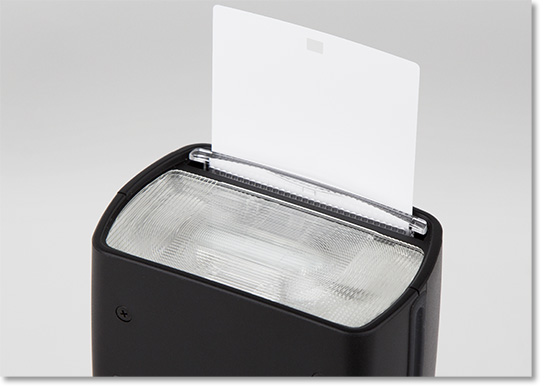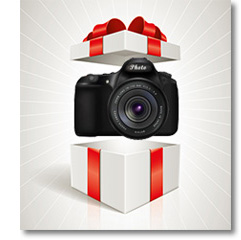Lighting Guide: Speedlight Modifiers

In our previous article, we provided a visual guide to the light patterns created by the most commonly used modifiers in portrait photography.
In this installment, we will continue the illustration with even more modifiers. This time, we will emphasize modifiers more commonly associated with speedlights.
Speedlights provide their own unique situations with which to contend. The advantage of the speedlight is its versatility and mobility.
Another big advantage is that a speedlight can communicate with your camera which enables it them to better work together.
Unless you are buying a low-end speedlight, there is not much price advantage compared to a single studio flash unit. Another disadvantage to the speedlight is that it usually doesn't emit as much light as a studio strobe.
As a general rule, if you never leave the studio with your camera, you are likely better off getting a good studio strobe kit. Otherwise, a speedlight is good first purchase.
As far as modifiers, speedlights offer mixed opportunities. There is no shortage of modifier options to attach directly to the flash unit. Many however, are better suited for getting attention rather than properly directing light.
Shoot-Through Umbrella

The shoot-through umbrella is another item that is often included with the purchase of a particular strobe light. It provides a light diffusion similar to a soft box.
Best Uses:
If budget is a consideration, this modifier is the best way to simulate the soft diffused light of a soft box. They also provide an advantage for mobility due to their light weight.
Reflective Umbrella

The reflective umbrella allows even more diffusion than its shoot-through cousin. The obvious difference between the two is that with one, the light goes through the diffusive material. On the other, the diffusion comes from bouncing the light.
Best Uses:
Again, budget and portability determine whether this is the best choice for your portrait photography needs.
Simple Diffusion Modifiers

The image above illustrates the differences between the "naked" flash and two different diffusers. The bare flash gives off a light similar to the shape of an eye. This is almost always better bounced off a wall or ceiling rather than pointing it directly at the subject. If at all possible, get the flash off the camera with a connected cord or with a radio transmitter.
The second image is using the diffuser that is usually built-in to most speedlights. Honestly, I was a bit surprised at the quality of the diffusion from this addition. I have only used the Omnibounce diffuser that is shown in the third image. While the Omnibounce does provide better diffusion at an economical price, the built-in diffuser will do in a pinch.
Best Uses:
Modifiers don't need to be expensive to be useful. There is a reason you have likely seen the Omnibounce attachment somewhere in your lifetime. There are a vast amount of other options available, but the rule of diminishing returns usually applies.
Catchlight Reflector
This is as good of a point as any to mention the other built-in modifier included in most speedlights. It's function isn't so much of modification as an addition to your subject's eyes. It's only purpose is to create a catchlight in your subject's eyes. Without catchlights, your subject will look less "lifelike" than with them. If you are unfamiliar with the concept of catchlights, take a look at our article on posing eyes.

After-Market Light Modifiers

As mentioned, there are no shortage of third-party modifiers available for you camera. Much of their appeal can be attributed to their unusual shapes rather than their functional ability. This is not to say that they are not beneficial.
Like umbrellas, they fall into either the shoot-through or reflective categories. One of each is fine for almost all circumstances. The Omnibounce shown earlier is a shoot-through type. The above is the Rogue Flashbender which one of the better reflective options available.
Best Uses:
As a general rule, I used shoot-through modifiers outside and in large buildings with fewer options to bounce the light. In more confined quarters, I go for the reflective option.
Studio-to-Speedlight Converters

One approach to building your lighting arsenal is to employ a converter that allows you to use studio-level modifiers while using a speedlight. These converters are relatively inexpensive.
The only caveat is that you will need to know which brand of studio flash you eventually intend to buy, because each brand has its own way of attaching modifiers. However, it is not critical since you will only have to change speed ring adapters if you change your preferred brand. The example above uses the Bowens speedring.
In our next article, we will compare different studio brands to help you decide which is best for your own particular needs.
Stay updated with all our new releases and articles by signing up for our free email updates. We only send emails once a week to keep you updated and we NEVER spam or share your information.








